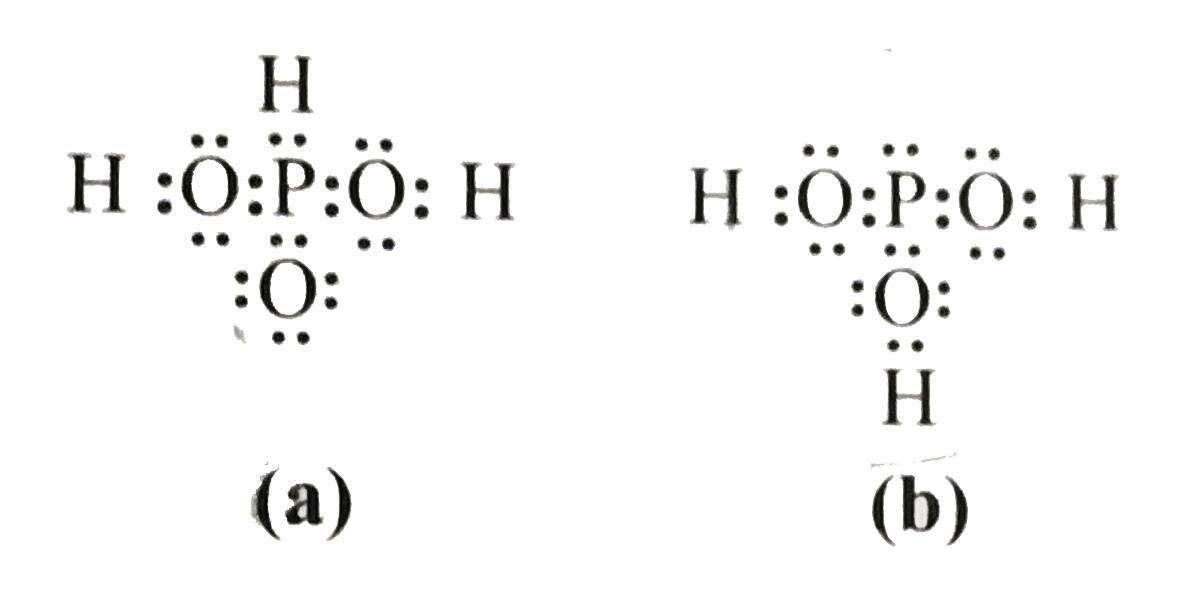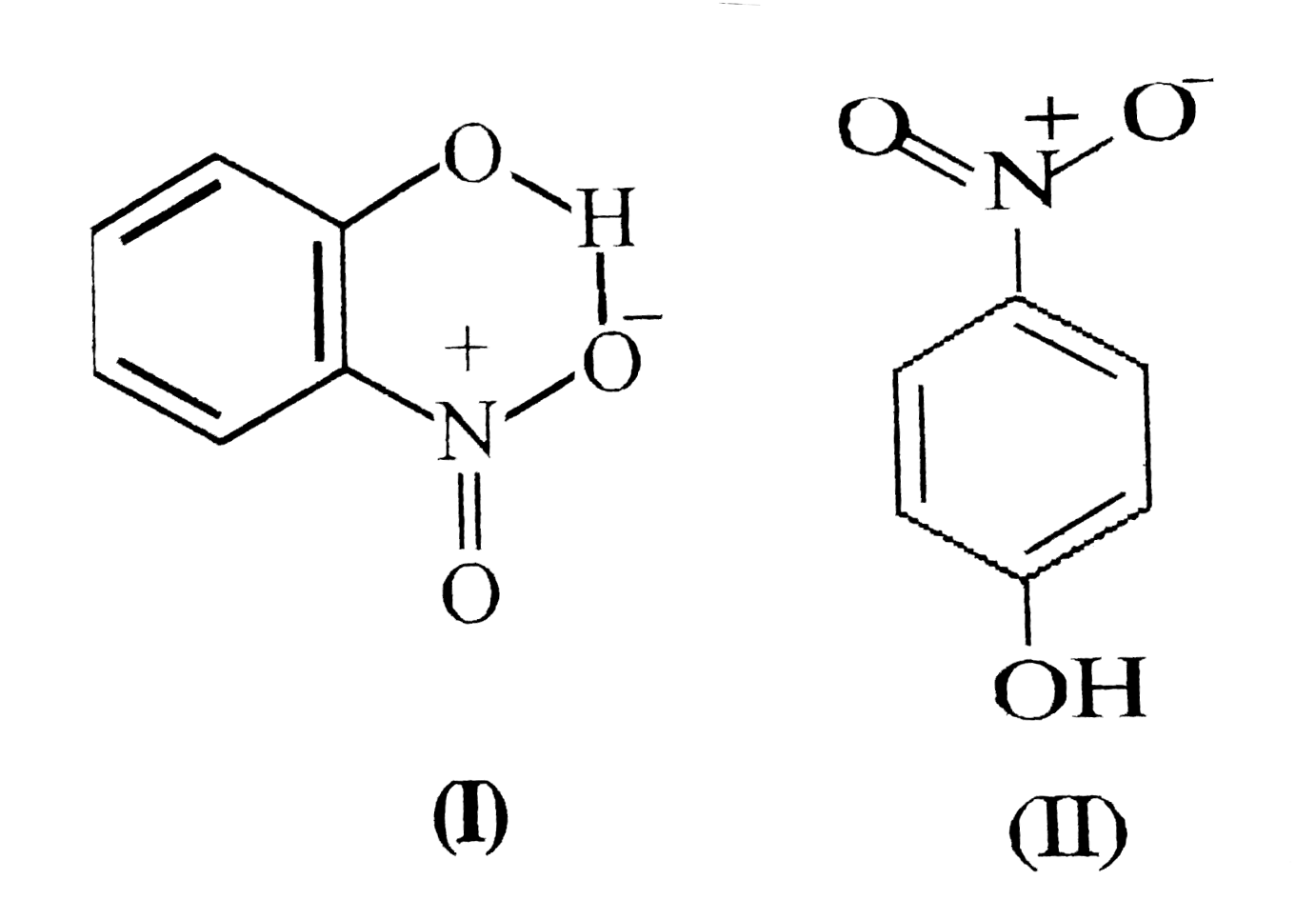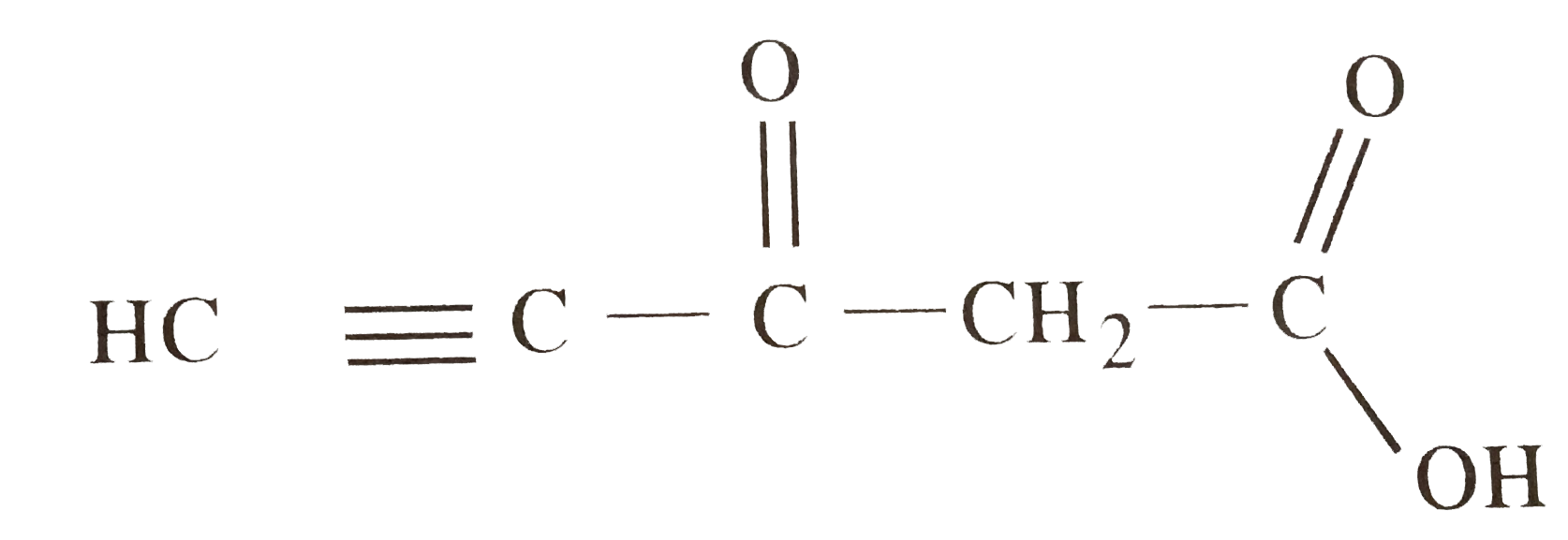Complete Solutions to BORD EXAMINATIONS of chapter CHEMICAL BONDING AND MOLECULAR STRUCTURE of Class 11 book with complete answers and questions
| Class 11 | CHEMISTRY |
| Chapter | CHEMICAL BONDING AND MOLECULAR STRUCTURE |
| DINESH COMPANION CHEMISTRY | BORD EXAMINATIONS |
| Number Of Questions | 84 |
| Academic Year | 2023-24 |
Explain the formation of chemical bond.
01:52View SolutionWrite the Lewis dot symbols of the following elements :
Be, Na, B, O, N, Br.01:47View SolutionWrite the Lewis dot symbole of the following atoms and ions :
S and `S^(2-)` ,P and `P^(3-)` , Na and `Na^(+)` , Al and `Al^(3+)` , H nad `H^(-)`05:20View SolutionDraw the Lewis structures the following molecules and ions :
`PH_(3),H_(2)S,SiCl_(4),BeF_(2),AlI_(3)^(2-),` HCOOH08:26View SolutionDefine octet rule. Write its significance and limitations.
07:07View SolutionWrite the favourable factors for the formation of ionic bond.
03:20View SolutionDiscuss the shape of the following molecules using the `VSEPR` model:
`BeCl_(2)`,`BCl_(3)`,`SiCl_(4)`,`AsF_(5)`,`H_(2)S`,`PH_(3)`04:37View SolutionAlthough geometries of `NH_(3)` and `H_(2)O` molecules are distorted tetrahedral, bond angle in water is less than that of ammonia. Discuss.
03:46View SolutionHow do you express the bond strength in terms of bond order?
02:16View SolutionEXPLAIN BOND PARAMETERS- BOND LENGTH,BOND ORDER AND BOND STRENGTH
11:23View SolutionExplain the important aspects of resonance with respect to the `CO_(3)^(2-)` ion.
02:01View Solution`H_(3)PO_(3)` can be represented by structure (a) and (b) shown below. Can these two structures be taken as the canonical forms of the resonance hybrid representing `H_(3)PO_(3)` ?If not, give reasons for the same.
 02:23View Solution
02:23View SolutionWrite the resonance structures for `SO_(3)`,`NO_(2)^(ө)`, and `NO_(3)^(ө)`.
03:56View SolutionUsing Lewis dot symbols, show electron transfer between the following atoms to form cations and anions :
(a) Na and Cl (b) K and S (c ) Ca and O (d) Al and N.01:55View SolutionAlthough both `CO_(2)` and `H_(2)O` are triatomic molecules, the shape of `H_(2)O` molecules in bent while that of `CO_(2)` is linear. Explain this on the basis of dipole moment.
04:18View Solutiona) Discuss the significance/applications of dipole moment.
b) Represent diagrammatically the bond moments and the resultant dipole moment in `CO_(2), NF_(3)` and `CHCl_(3)`02:54View SolutionELECTRONEGATIVITY & ELECTRON GAIN ENTHALPY
10:12View SolutionExplain with the help of suitable example polar covalent bond.
04:38View SolutionArrange the bonds in order of increasing ionic character in the molecules: LiF, `K_(2)O, N_(2), SO_(2) " and " ClF_(3)`.
03:33View SolutionThe skeletal structure of `CH_(3)COOH` as shown below is correct but some of the bords are wrongly shown. Write the correct Lewis structures of acetic acid.
`H-underset(H)underset(|)overset(H)overset(|)C-underset(* *)overset(":"O":")overset(|)C-underset(* *)O-H`02:42View SolutionApart from tetrahedral geometry, another possible geometry for `CH_(4)` is square planar with the four `H` atoms at the corners of the square and the `C` atom at its centre. Explain why `CH_(4)` is not square planar?
03:04View SolutionExplain why `BeH_(2)` molecule has a zero dipole moment although the `Be-H` bonds are polar?
01:58View SolutionBoth `NH_(3) and NF_(3)` have identical shapes and same state of hybridisation. Both N-H and N-F bonds have almost the same electronegativity difference. But still, the two molecules have different dipole moment values. How will you account for it ?
02:03View SolutionWhat is meant by hybridisation of atomic orbitals? Describe the shape of `sp`,`sp^(2)`,`sp^(3)` hybrid orbitals.
06:23View SolutionDescribe the change in hybridisation (if any) of the `Al` atom in the following:
`AlCl_(3)+Cl^(ө)rarr AlCl_(4)^(ө)`02:54View SolutionIs there any change in hybridisation of the `B` and `N` atom as a result of the following reaction?
`BF_(3)+NH_(3)rarr F_(3)B.NH_(3)`03:07View SolutionDraw diagrams showing the formation of a double bond and a triple bond between carbon atoms in `C_(2)H_(4)` and `C_(2)H_(2)` molecules.
04:25View Solutionwhat is the total number of sigma and pi bonds in the following molecules?
a. `C_(2)H_(2)` , b. `C_(2)H_(4)`03:06View SolutionConsidering X-axis as the internucler axis, which out of the following atomic orbitals will from a sigma bond ?
`(a)1sand 1s" " (b) 1s and 2p_(x)" "(c )2p_(y)and2p_(y)" "(d)1s and2s.`01:37View SolutionWhich hybrid orbitals are used by the carbon atoms in the following molecules ?
`(a)H_(3)C-CH_(3)" "(b)H_(3)C-CH=CH_(3)" "(c )CH_(3)-CHO" "(d)CH_(3)COOH`02:01View SolutionWhat do you understand by bond pairs and lone pairs of electrons? Illustrate by giving one example of each type.
05:15View SolutionDistinguish between a sigma and a pi bond.
06:03View SolutionExplain the formation of `H_(2)` molecule on the basis of valance bond theory.
03:44View SolutionWrite the important conditions required for the linear combination of atomic orbitals to form molecular orbitals.
05:31View SolutionUse molecular orbital theory to explain why the `Be_(2)` molecules do not exist?
02:15View SolutionCompare the relative stability of the following species and indicate their magnetic properties:
`O_(2)`,`O_(2)^(o+)`,`O_(2)^(ө)`(superoxide),`O_(2)^(-2)`(peroxoide).05:08View SolutionWrite the singificance of plus and inus signs in representing the opitals.
02:02View SolutionDescribe the hybridisation in case of `PCl_(2).` Why are the axial bonds longer as compared to equatorial bonds ?
03:00View SolutionDefine hydrogen bond. Is it weaker or stronger than the van der Waals forces?
04:01View SolutionWhat is meant by the term bond order ? Calculate the bond order ? Calculate the bond order of : `N_(2),O_(2),O_(2)^(-)and O_(2)^(2-)`
10:36View SolutionInterpret the non-linear shape of `H_(2)S` molecule and non-planar shape of `PCl_(3)` using valence shell electron pair repulsion (VSEPR) theory.
(Atomic number `:H=1, P=15, S=16, Cl=17`)02:09View SolutionUsing molecular orbital theory, compare the bond energy and magnetic character of `O_(2)^(+)` and `O_(2)^(-)` species.
06:01View SolutionExplain the shape of `BrF_(5^.)`
01:31View SolutionStructures of molecules of two compounds are given:
(a) Which of the two compounds will have intermolecular hydrogen bonding and which compound is expected to show intramolecular hydrogen bonding.
(b) The melting point of a compound depends on, among other things, the extent of hydrogen bonding. On this basis explain which of these two compounds will show higher melting point.
(c ) Solubility of compounds in water depends on power of formed hydrogen bonds with water. Which of these compounds will from hydrogen bond will water easily and be more soluble in it ?
 02:33View Solution
02:33View SolutionWhy does type of overlap given in the following figure not result in bnd formation ?
 02:22View Solution
02:22View SolutionExplain why `PCl_(5)` is trigonal bipyramidal whereas `IF_(5)` is square pyramidal ?
01:42View SolutionIn both water and dimethyl ether `(CH_(3)-underset(* *)overset(* *)O-CH_(3)),` oxygen atom is central atom, and has the same hybridisation, yet they have different bond angles. Which one has greater bond angle ? Give reason.
 02:33View Solution
02:33View SolutionThe energy of `sigma2p_(z)`, molecular orbital is greater than `pi2p_(x)` and `pi2p_(y)` molecular orbitals in nitrogen molecule. Write the complete sequence of energy levels in the increasing order of energy in the molecule. Compare the relative stability and the magnetic behaviour of the following species.
`N_(2), N_(2)^(+), N_(2)^(-), N_(2)^(2+)`03:51View SolutionGive the change in bond order in the following ionisation process?
i. `O_(2) rarr O_(2)^(o+)+e^(-)` , ii.`N_(2) rarr N_(2)^(o+)+e^(-)`03:54View SolutionGive reasons for the following :
(i) Covalent bonds are directional while ionic bonds are non-directional.
(ii) Water molecule has bent structure whereas carbon dioxide molecule is linear.
(iii) Etyne molecule is linear.03:50View SolutionWhat is an ionic bond ? With two suitable examples, explain the diference between an ionic and a covalent bond ?
02:52View SolutionExplain why `CO_(3)^(2-)` ion cannot be represented by a single Lewis structure. How can it be best represented ?
02:39View SolutionPredict the hybridisation of each carbon in the molecule of organic compound given below. Also indicate the total number of sigma and pi bonds in this molecule.
 02:19View Solution
02:19View SolutionGroup the following as linear and non-linear molecules :
`H_(2)O,HOCl,BeCl_(2),Cl_(2)O`02:06View SolutionElements X,Y and Z have 4,5 and 7 valence electrons respectively, (i) Write the molecular formula of the compounds formed by these elements individually with hydrogen (ii) which of these compounds will have the highest dipolw moment ?
02:21View SolutionDraw the resonatin structure of
(i) Ozone molecule (ii) Nitrate ion01:52View SolutionPresict the shapes of the following molecules on the basis of hybridisation.
`BCl_(3),CH_(4),CO_(2),NH_(3)`02:22View SolutionAll the C-O bonds in carbonate in `(CO_(3)^(2-))` are equal in length. Explain.
01:25View SolutionWhat is meant by the term vaerange bond enthalpy? Why is there difference in bond enthalpy of O-H bond in ethanol `(C_(2)H_(5)OH)` and water `(H_(2)O)` ?
02:47View Solution(I) Discuss the significance/applications of dipole moment.
(ii) Represent diagrammatically the bond moments and the resultant dipole moment in `CO_(2), NF_(3).`02:40View SolutionUse the molecular orbital energy level diagram to show that `N_(2)` would br expected to have a triple bond, `F_(2)` a single bond `Ne_(2)` no bond.
View SolutionBriefly describe the valence bond theory of covalent bond formation by taking an example of hydrogen. How can you interpret energy changes taking place in the formation of dihydrogen?
04:42View SolutionDescribe hybridisation in the case of `PCl_(5) and SF_(6)` The axial bonds are longer as compared to equatorial bonds in `PCl_(5)` whereas in `SF_(6)` both axial bonds and equatorial bonds and have the same bond length. Explain.
03:06View SolutionDiscuss the concept of hybridisation. What are its different types in a carbon atom ?
02:24View SolutionWhat is the type of hybridisation of carbon atoms marked with star.
`(a)overset(**)CH_(2)=CH-""^(**)overset(O)overset(||)C-O-H" "(b)CH_(3)-overset(**)CH_(2)-OH" "(c ) CH_(3)-CH_(2)-overset(O)overset(||)C""^(**)-H`
`(d)overset(**)CH_(3)-CH=CH-CH_(3)" "(e)CH_(3)-overset(**)C-=CH`01:51View SolutionA molecule of `H_(2)` exist while that of the `He_(2)` does not. Explain.
01:55View SolutionNaCl and `AgNO_(3)` are ionic solids and they readily dissodciate to from ions in solution. `Ag^(+)` ions combine with `Cl^(-)` ions to give white precipitate of AgCl. But `C Cl_(4)` is covaolent compound and does not give `Cl^(-)` ions in solution. Therefore, no reaction is possible between `C Cl_(4)` and `AgNO_(3).`
02:20View Solution`BeF_(2)` and `H_(2)O` are both tri-atomic molecules but have different shapes. Discuss.
01:35View SolutionBond angle in `NH_(3)` is molre than in `PH_(3).` Explain.
01:17View SolutionWhy is HCl predominantly covalent in the gaseous state but is ionic in squeous solution ?
02:44View SolutionCan a non-polar molecule have polar covalent bonds?
01:33View Solution(a) Explain sigma and pi bonds with suitable examples,
(b) A pi bond cannot be formed in the absence of sigma bond. Discuss.02:53View Solution`PCl_(5)` exists but `NCl_(5)` does not because
01:50View Solutiono- nitrophenol is steam volatile while p-nitrophenol is not. Discuss.
01:50View Solution`KHF_(2)` exists while `KHCl_(2)` does not. Explain.
01:34View SolutionYor are given the electronic configuration of five neural atoms -A,B,C,D and E.
`A-1s^(2)2s^(2)2p^(6)3s^(2) , B-1s^(2)2s^(2)2p_(2)3s^(1), C-1s^(1)2s^(2)2p_(1),D-1s^(2)2s^(2)2p^(5),E1s^(2)2s^(2)2p^(6).`
formula for the substances containing (i) A and D (ii) B and D (iv) onle E.01:53View SolutionBoiling point of ethane is more than that of methane. Assign reason.
01:12View SolutionWhich comopound from each of the following pairs ismore covalent and why ?
`{:((a),"CuO or CuS",(b),"AgCl or AgI"),((c ),PbCl_(2) or PbCl_(4),(d),BeCl_(2)or MgCl_(2)):}`03:13View SolutionThe bond angles in `NH_(4)^(+)` and `CH_(4)` are same but `NH_(3)` has different bond angle. Why ?
02:21View SolutionPredict which out of the following species are planar.
`(i) NH_(4)^(+) (ii)CH_(3)^(+)(ii)SF_(4)(iv)OF_(2)(v)H_(2)O`02:02View SolutionWhy is `MgCl_(2)` molecule linear whereas the molecules of `SnCl_(2)` chloride has angulare shape ?
03:05View SolutionThe hybridisatio of oxygen in both water and diethyl ether molecules is the same but they differ in their bond angles. Explain.
02:51View SolutionBoth Na and H occur in group 1 of the periodic table ,yet melting point of HCI is `-114^(@)C.` Why ?
03:10View SolutionWith the help of molecular orbital theory, draw the molecular orbital energy level diagram for `N_(2)` molecule. Also calculate the bond order and predict the magnetic behaviour.
02:14View Solution
BORD EXAMINATIONS questions and complete solutions for chapter CHEMICAL BONDING AND MOLECULAR STRUCTURE of S DINESH & CO CHEMISTRY (HINGLISH) of Class 11
All Exercises from DINESH COMPANION CHEMISTRY Class 11 CHEMISTRY CHEMICAL BONDING AND MOLECULAR STRUCTURE
- ADDITIONAL IMPORTANT QUASTIONS
- BORD EXAMINATIONS
- COMPREHENSION
- COVALENT AND CO-ORDINATE BONDS
- EXAMPLE
- H.O.T.S. CONCEPTUAL QUESTIONS
- HYDROGEN BONDING
- III.MATCHING TYPE QUESTIONS
- IONIC BOND
- IV. ASSERTION-REASON TYPE QUESTIONS
- JEE (JOINT ENTRANGE EXAMINATION) ADVANCED COMPREHENSION LINKED MCQs
- JEE (MAIN) & OTHER ENGINEERING ENTRANCE EXAMINATIONS
- MATRIX-MATCH TYPE QUEDTIONS
- MULTIPLE CHOICE ANSWER TYPE MCQs
- MULTIPLE CHOICE QUESTIONS (TYPE -1)
- MULTIPLE CHOICE QUESTIONS (TYPE -II)
- MULTIPLE CHOICE QUESTIONS BANK (MCQB)
- MULTIPLE CHOICE QUESTIONS MCQs
- PROMBEMS FOR PRACTICE
- REASON TYPE QUESTIONS
- STRAIGHT OBJECTIVE TYPE MCQs (SINGLE CORRECT OPTION)
- VALUE BASED QUESTIONS
